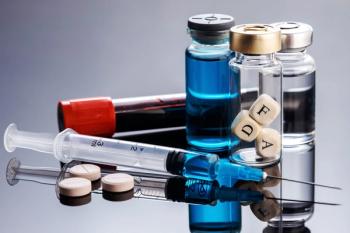
5 developments to watch for in HIV/AIDS treatment and prevention in 2021
Injectable treatments may start to replace daily pills.
2021 stands to be pivotal year for HIV/AIDS prevention and treatment. Many researchers and advocacy groups are heartened by President-elect Joe Biden’s selection of
Walensky will be taking the reins at the CDC at a crucial time in the course of the HIV/AIDS epidemic. Many people infected with HIV don’t have a diagnosis, so diagnosed cases don't tell the full story by any means, Even so, it's notable that the number of diagnosed cases has been declining. In 2018, the latest year for which a tally is available, 37,968 new cases were diagnosed, which is 2,868 fewer cases than the 40,836 diagnosed in 2014. In 2018, 5,425 Americans died from the AIDS.
Two years ago, the Trump administration promulgated a 10-year plan to end
Here are five developments to look out for in 2021 that may have a major effect on HIV/AIDS treatment and prevention:
1a. Awaiting a decision from the FDA on long-acting injectable Cabenuva
So far, treatment for HIV involves taking pills that need to be taken daily. That may change this year with the advent of treatments that can be injected and don’t need to be taken daily. The implications of long-acting injectable treatment are great, as they will likely improve adherence to treatment and eliminate the daily reminder of treatment.
The FDA is expected to issue its decision on ViiV Healthcare’s injectable Cabenuva—a combination of cabotegravir and rilpivirine—sometime in the next few months.
[Updated: The FDA approved Cabenuva on Jan. 21 along with an oral version of cabotegravir, which is supposed to be taken with an oral version of rilpivirine for a month before starting treatment Cabenuva to test how patients will react to the two-medication combination.]
ViiV Healthcare, a joint venture by GlaxoSmithKline and Pfizer, is marketing Cabenuva.
In phase 2 and 3 clinical trials, the treatment combination, given as two injections — one of cabotegravir and the other, rilpivirine — once a month by a healthcare provider, was shown to be equally as effective as traditional oral options. While it did cause injection-site reactions,
1b. Inching closer to a twice-yearly injectable for treatment-resistant patients
Gilead is expected to complete regulatory filings this year for their long-acting self-injectable HIV treatment lenacapavir. Gilead’s long-acting injectable only has to be injected once every six months, a far cry from the daily oral treatments.
If approved, the HIV-1 capsid inhibitor will be the first approved treatment of its kind and is meant for heavily treated patients who have become resistant to multiple drugs—a particularly difficult-to-treat group of patients—in combination with other treatments.
The anticipated regulatory filings will come on the heels of
2. How might solo cabotegravir play out
Excitement is also mounting for the very real possibility that a long-acting injectable to prevent HIV will soon be approved. As 2020 came to a close, the FDA granted breakthrough designation to ViiV Healthcare’s cabotegravir—one of the two drugs in HIV treatment candidate Cabenuva—for the prevention of HIV. Cabotegravir is administered once every 2 months.
The treatment
3. Continuing the quest for an HIV vaccine
Despite all the progress in HIV treatment, development of an effective HIV vaccine has proved to be elusive. But vaccine research continues. Janssen’s late-stage
4. Gaining more coverage for HIV prevention medication
As the HIV community awaits for the approval of long-acting injectable cabotegravir, a new rule will make current HIV prevention treatments more accessible. Private insurers are now gearing up to offer full coverage for these treatments, also known as PrEP, including Gilead’s Truvada and Descovy, as well as Teva’s newly available generic version of Truvada, for patients at high risk of acquiring HIV.
Coverage of PrEP, which reduces the risk of acquiring by HIV by more than 90%, will likely have significant implications for many patients at risk of HIV, as out-of-pocket costs for the treatments can run patients $1,000 each year
The move follows the U.S. Preventive Services Task Force—an independent panel that reviews the effectiveness of and provides recommendations for preventive services—giving PrEP for HIV prevention an “A” recommendation back in 2019. Under the ACA, most insurers must cover preventive services that receive an “A” or “B” rating from the group.
Newsletter
Get the latest industry news, event updates, and more from Managed healthcare Executive.





















































